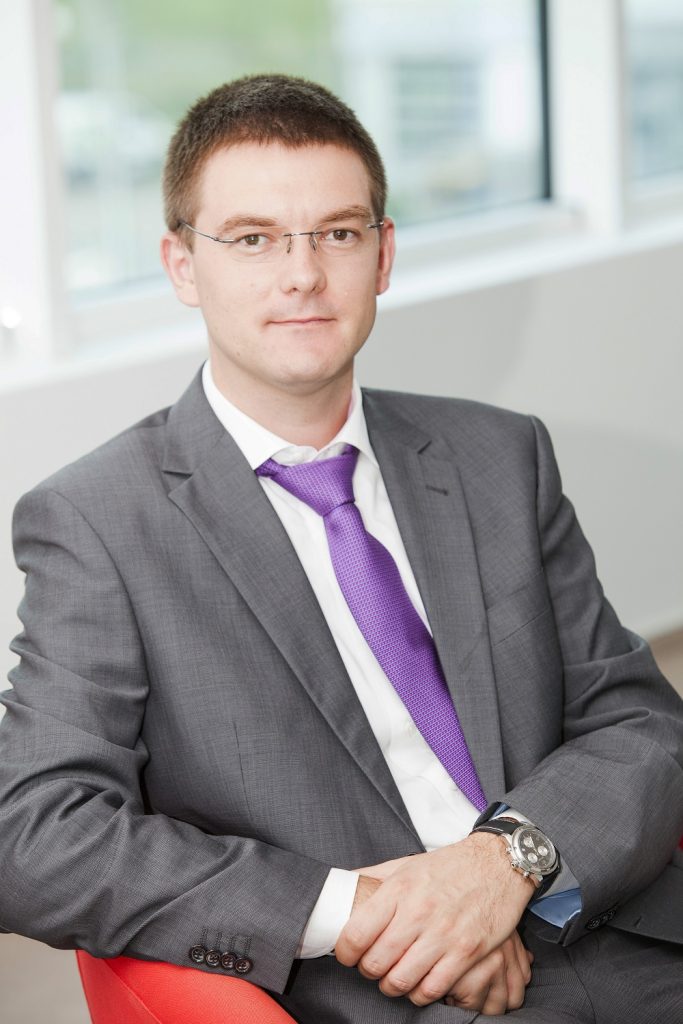This year, early adopters of IoT technology will have another reason to wait for December 25, Christmas Day: Marosvásárhely / Târgu Mureș-based IT company Navigator Software is launching its online shop on that day. A limited number of users will be able to test custom-designed hardware, download software, and connect their smart devices to a newly launched cloud-based platform, Navigator Cloud. The service aims to best serve the needs of company owners in Transylvania who are looking to make informed decisions based on information from a wide array of smart devices. The unique technology, which combines software and hardware tailored for the Transylvanian market, was developed in-house, and the public beta-like launch follows an extensive testing phase. CEO Endre Balázs and CTO Levente Kocsis say they are now ready to test the service as a public beta and are eager to get customer feedback.
“As we started using smart devices, we have found that we are dealing with a fragmented market: each device has its own software built with a specific mindset and developed to solve a single problem. Our basic idea was to develop a platform where we can plug in a variety of devices, connect them to a single system, and also try to bring in a specialist,” CTO of Navigator Software Levente Kocsis says. Upon launch, Navigator Cloud will be accessible on both desktop and mobile platforms, and native Android and iOS applications will be available for download for free for users looking to leverage their office, home, or production line using the latest available technology and IoT.

It’s easy to understand where Kocsis’ arguments are coming from. If we take the Nest thermostat as an example, we see that the product learns your habits and adapts its functionality accordingly, but only solves one problem: the heating of the selected space. Despite being smart and having a backend peppered with machine learning, it simply falls short.
“Our product goes further: it solves the heating problem of an office or home, but at the same time it monitors the garden’s watering system, gets data from installed security cameras, and warns the user if unauthorized access was detected. It can even provide keyless access to the office, and more. Simply put, the user – in our case a company – has access to a wide variety of sensors and platforms, which allows it to take control and monitor multiple actions,” Kocsis says.
The cloud-based service allows users to decide what logical steps the controlled system takes and to set up workflows. “For example, the simple thermostats available on the market allow users to program them. That’s good, but there is so much room for improvement. If we combine that setup with information about whether a person is present or not in the room at the moment when the thermostat sends a signal to the furnace to start, we are talking about a more efficient system,” Kocsis added.
Navigator Software’s IoT platform gets all of its data from connected sensors, displays them on a dashboard, and then allows users to set thresholds and combine all of that information in a set of actions following a simple “if this, then that” workflow. In the case of the aforementioned thermostat, the heat trigger signal is corroborated when combined with a movement sensor: If the temperature falls below 25 degrees Celsius and there are people in the room, start the furnace. If not, don’t start the heating. It’s that simple.
“Our primary product is a classic cloud-based platform that receives data, analyzes data, runs processes, registers the devices, etc. On the hardware side, we have a so-called IoT router designed and manufactured in-house, which is available in two versions: one for the home/office environment and another for the industrial environment. These two devices are complemented by a variety of sensors, cameras, and relays, which we use in the workflows. Another category would be a client’s machine that requires remote control. The machine in question will be part of the system in case the user needs to get data from it or wants it to be controlled remotely.”
“There are physical and virtual sensors,” Balázs adds. “We wrote protocols for physical sensors so any manufacturer can plug in to our platform. In other words, we don’t limit the service to the sensors we have; instead, the platform gives any manufacturer the ability to connect their sensors/devices using a certain protocol. There are tons of sensor manufacturers, and each has its own software, which creates a problem: If I want to create a mesh of sensors in my office or in a factory, I end up with many pieces of software that I have to handle individually. We have unified this by connecting them to a single platform. This cloud-based service handles the communication and control of the mesh of sensors, which simplifies and speeds up the whole installation process.

Virtual sensors are internet-based services such as weather.com or meteoblue. But they can be any other online database to which the platform is able to connect. The platform fetches the information from online databases, eliminating the need to connect another sensor to check the weather to the platform.
“During the test phase, we make sure the sensors supply the correct data, and the IoT router makes the correct decisions alongside the platform we have built. When every detail is ironed out, then we move to the next phase of the project: We invite specialists to join custom-tailored projects in their fields of experience,” Balázs added. What this means is that specialists will get access to all the data collected by the sensors and the action plan set up by the user. You can imagine this as a visit to the doctor: The user initiates a chat with the specialist using the platform’s built-in messaging system and shares all the data he or she has. The specialist will review the data, “diagnose” the situation, and develop an action plan, which they will share with the user. After that, the ball is in the user’s court, and he or she will decide whether or not to implement the action plan.
For example, if you have a smart watering system set up, the sensors will give you the data. However, as you may not be a gardener by profession, the information the sensors collect and display on your personal system dashboard may represent knowledge you don’t know how to use. And knowledge without action is useless. This is where the specialist comes into the picture: a gardener who has the data about a garden and watering system can make a decision and provide an action plan to keep the system at peak performance. After that, however, the ball is in the user’s court, so he or she will decide the fate of the action plan developed by the specialist.
The project is part of an R&D grant open to Romanian clusters, and Navigator Software – as part of the IT Plus Cluster – has won such a grant from the Ministry of Research and Innovation. The total value of the project consists of funds provided by the EU, Ministry of Research and Innovation, and Navigator Software’s own contribution. After four years of hard work and heavy testing, the platform is nearing the big launch. However, the first step is to open the platform to a limited number of users as the Navigator Cloud enters the public beta phase. This means only select users will be able to test the service, as the company aims to subject their platform to a stress test for roughly six months, during which users can test the platform and connected sensors in real life and send feedback.
One of Navigator Cloud’s key selling points will be the lifetime warranty of the product. “This means that if a user encounters issues with the product, we replace and not repair it during the product’s lifecycle,” Endre Balázs says.